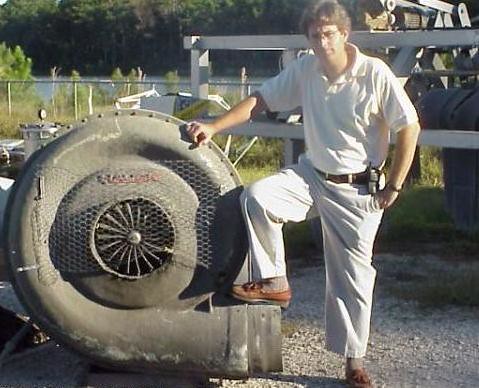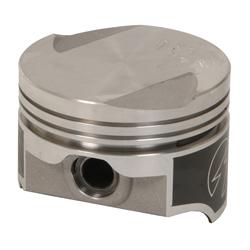volvoclearinghouse wrote: Now, can we focus on building an engine please?
But I want to be an internet vigilante!![]()
volvoclearinghouse wrote: Now, can we focus on building an engine please?
But I want to be an internet vigilante!![]()
In reply to Javelin:
Another Tunachucker here. The LTD was free. Seriously, $0. The Lincoln, 2nd motor, scrapped out for full purchase price. $0 We paid for the truck motor, but sold the blowed up Lincoln motor so...$200 or something to that effect. The RV was scrapped... $0 You get the idea.
Swapping the smogged up 460 and a C6 X times is punishment enough for running this combo. ![]()
We might actually spend the $500 on performance parts after all these races. ![]()
Back to the engine build...
So I hear Kaase makes some nice stuff. ![]()
Mac
Screw it. I'm just going to buy this.. ![]()

In reply to tester:
The 30,000 mile RV engine we're using as a base was purchased, with a C6, for $400. I sold the C6 (it wasn't compatible with our race car) for $200.
And, as you've correctly pointed out, there have been a number of other Ford products and drivetrains that have passed through our garage, all for three-digit money.
This is racing. It doesn't get any cheaper than this. ![]()
Are you upgrading the valve springs? If not, that should be considered in your cam selection as well.
know you don't want to hear this... but machining the blocks deck will get your squish(quench) where you want it... it will also raise compression.
You might be able to make exhaust port plates on your own.....

They don't look to hard to make......
I feel like the cheapest route here is to throw a mild cam, valve springs, and properly gapped rings at it, leaving the pistons and heads alone, then feed it somewhere in the neighborhood of 8 psi through a blow though setup.
I remember reading something in Super Ford Magazine a long, long time ago about a fella who built a few 460s for his offshore race boat. The thing is, they were real cheap to build because running them on water didn't allow the engines to spin very fast. So he built absolute torque monsters that would only turn to about 3500 rpm. None of the components were expensive because the engine didn't turn. I really want to find that article, because I want to build one for my '79 F-150 to make a super-efficient tow rig.
ross2004 wrote: Are you upgrading the valve springs? If not, that should be considered in your cam selection as well.
One can really go down the rabbit's hole with this stuff. Cam requires springs, then lifters, pushrods...I'd like to see if some of the cams I'm looking at would work with stock...everything else. If we don't go too stupid on the lift and keep the RPMs under 5000 I think it'll be OK. I'd love some honest input from a cam manufacturer, but you know they just want to sell you all the E36 M3 they can. ![]()
BrokenYugo wrote: I feel like the cheapest route here is to throw a mild cam, valve springs, and properly gapped rings at it, leaving the pistons and heads alone, then feed it somewhere in the neighborhood of 8 psi through a blow though setup.
I'd go draw through with a carburetor and reasonable (under 8 psi) boost levels. But regardless, boosting a motor with terrible quench characteristics is a recipe for pinging. And the cam profiles that work best with boost are...different. I don't even want to think about fabricating the turbo plumbing for that mess, either.
Sorry, I'm just sort of out of my wheelhouse when it comes to snails and other spinny things that press the air. I like inches and squeeze to get my ponies.
In reply to oldeskewltoy:
Oh, I know decking the block will get us there. It's just cheaper and easier to get pistons. Seriously. A set of fuel injected pistons (taller compression height and smaller valve reliefs) is like $200.
From what I have read about porting 460 exhaust ports, it sounds like there's a few tricks. The floor is already too low, so you don't want to mess with that. The low-hanging fruit is stuff like the valve guide boss (huge) and the smog pump "bumps". I'd probably throw a gasket on there to port-match the headers while I'm at it.
you're approaching this all wrong, instead of raising compression, just take advantage of the low compression and strap one of these on it.

Just to keep being the asshat with the dumb ideas, I'm going to suggest making it a V10 by buying the largest aircooled V-twin you can get your hands on and attaching it to the front of the 460, poking out of the grille like it thinks it's the worlds biggest berkeleying Morgan or something:

Call it the Forgan LTD10!
Streetwiseguy wrote:Jerry From LA wrote: Just go easy on the cam and dial in the cam timing for power instead of emissions. "One up from stock" would probably do it. The biggest restriction in this motor is the heads.I'd say the second biggest restriction is the heads. If absolutely nothing else were done to the engine, a cam change would practically double the useable torque, by adding some rpm range. I doubt that lump would hit 5500 rpm in neutral with a brick on the throttle. Put on a set of aluminum hot rod heads, and use the stock cam, and you would want to shoot yourself every time you tried to spin it above 3500.
Remember, this is a motor for a LeMons car. New aluminum heads with a cam would surely be the way to penalty laps. In this case, finding some stock castings that are less restrictive and porting them with some mild cam to match would at least give the appearance of following the spirit of the rules.
In reply to Jerry From LA:
Actually, the D3VEs on the engine now have a lot to recommend them. The intake ports are unrestrictive, and there is some quench available with the right pistons. Plus, these have 30,000 miles on them, and are zero cost (I already have them).
Fuel injected heads have different intake runner spacing, so they don't work with our carb manifold. And the early, small chamber heads are rare and $$$.
The worst are the early 70's heads, that came right when Ford dropped compression on the engines to like 7.5:1. They have no redeeming qualities, other than making great paperweights and anchors for small watercraft.
From a fellow teammate and driver of this famous barge, I would like to add that I doubt heads are seriously wrecking performance from an airflow perspective, since 5000 RPM is a lofty goal.
Are headers in this plan? I believe they, along with some basic exhaust porting, would be the biggest airflow help you can give.
I totally love the quench fixing ideas.
Does anyone have any real data on trick rings? I like modern ring packages, with their thinner lower tension rings. Is there a way to do this while still staying on budget, since the FI OEM pistons will be so cheap? I have no clue is "zero gap" rings have any redeeming qualities.
In reply to volvoclearinghouse:
That's what I was saying in a nutshell. I'm not up on all my 460 head castings but, if you can port the ones you have now, that would be the ideal solution. In my original post, I said keep the cam mild because you'll just push the power peak past the point of impending destruction.
If it's all a question of which cam to use I say buy your pistons, figure out your new engine specs, and call a couple cam companies. Tell them what you are doing and your goals. These guys work with cams all day and will know what you need. Its not in their interest to sell something that doesn't make you happy. I would guess that if you are staying under 5k rpm then there isn't much need to increase valvetrain beefiness.
tuna55 wrote: From a fellow teammate and driver of this famous barge, I would like to add that I doubt heads are seriously wrecking performance from an airflow perspective, since 5000 RPM is a lofty goal. Are headers in this plan? I believe they, along with some basic exhaust porting, would be the biggest airflow help you can give. I totally love the quench fixing ideas. Does anyone have any real data on trick rings? I like modern ring packages, with their thinner lower tension rings. Is there a way to do this while still staying on budget, since the FI OEM pistons will be so cheap? I have no clue is "zero gap" rings have any redeeming qualities.
I, too, love all the quench fixing ideas. I do think a good decking would be awesome, though it would also require machining the intake.
I read somewhere there's a Chevy piston that fits the 460 as well. Some guys use the Chevy wrist pins, even. Bore is 4.39". CH should be around 1.772" ish. Go forth and find me these pistons!
EDIT: This is probably what we'd go with for 460 type pistons.

I don't know the definitive stock head to get, but sounds like you have maybe a couple of options to run with. Spend the time porting the heads this is free and then spend all the $500 can you get it for that? for a cam, springs, and pushrods. For that large a engine, I think that you would want somewhere in the 270-280 duration and get as large a lift as you can which will not make it interference.
Get headers if you can, some big block headers and make them fit.
Asked a buddy, he love BBF. Get a big turbo, do drawthrough setup. Done. Leave it stock inside, and slap that baby on there. You can hard mount the turbo to the frame, and just use a flex pipe up to it and going to the engine from it. Will have to mod the carb to work properly.
In reply to volvoclearinghouse:
Not a fan of shorties, but they're better than what's on there. Check for clearance first. On the turck, for example, shorties run right into the crossmember. Doesn't the LTD not have inner fenders at this point? You should be able to fit almost any full length header in there.
In reply to tuna55:
The main issue is clearance for the steering and front suspension. The shorties basically use the same outline as the factory iron manifolds. You are correct, there's no inner fenders right now.
Of course, we all know the solution, and are thinking it: FENDER WELL HEADERS!!!

I recall an old Hot Rod Magazine article '01-'02-ish) where a guy took a 460 and flipped the manifolds, mounted some T-bird Turbo Coupe turbochargers and Saab 900 Turbo intercoolers on a stock 460 truck long block with a intake and blow-through carb. It made low horsepower (350ish) but massive torque (715lb-ft). And then he put it in a blue and yellow 1958 Mercury wagon. Wish I could find the article online for the parts list.
You'll need to log in to post.